Engaged in the clothing industry for 20 years.

Label to Watch: biodegradable suits from Lotta Ludwigson
Mattel’s “Day to Night” Barbie of the 80s was a sensation – at least for little girls: Barbie not only went to work in a great pink suit (and was thus financially independent), but could simply reverse it in the evening and turn it into a party outfit. Those little girls have now become seasoned businesswomen and want their office outfits to be not only versatile and elegant, but also circular. They wonder what happens to their suits at the end of their lives and refuse to contribute to a growing mountain of textile waste.
This is where slow fashion luxury brand Lotta Ludwigson comes in, creating fair, circular and timeless business fashion for women that can also be worn after hours. The label takes care to apply the cradle-to-cradle design method and to design clothes in such a way that they never end up in the trash, but can instead be completely broken down after several product life cycles.
FashionUnited spoke to co-founder Charlotte Piller about the challenges of bringing the first bio-circular business suit for women onto the market. She also talked about how a fairer, more sustainable and more transparent fashion system is possible and how Lotta Ludwigson is pioneering transparency in areas such as material origin, supply chain and pricing.
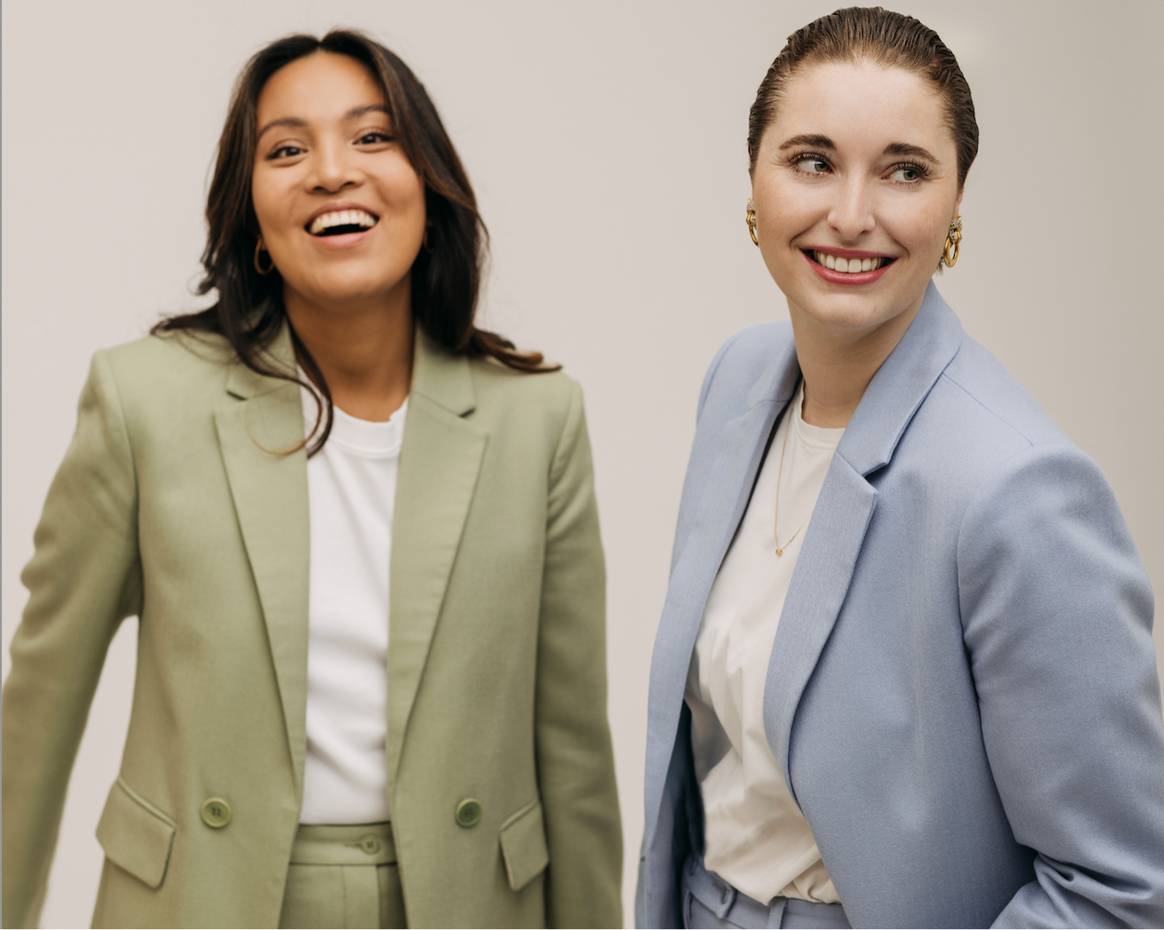
How did you end up founding a circular fashion brand?
Out of sheer frustration – I was looking for a blazer that was completely circular and biodegradable because I didn’t want to contribute to the mountains of textile waste. I had already researched this topic in Copenhagen, where I studied, lived and worked. I was looking for circular fashion, especially elegant business fashion for women, and realised that there was actually nothing out there and decided to make it myself.
Then I started looking for support and found an agency in Berlin that specialises in sustainable, circular design. Together, we created the first prototype, which took almost two years. The various components needed for a blazer, for example, did not yet exist; shoulder pads, for example, contained plastic. We then developed the first compostable shoulder pads with a shoulder pad company from Germany. We then developed the fabrics ourselves, which all took time.
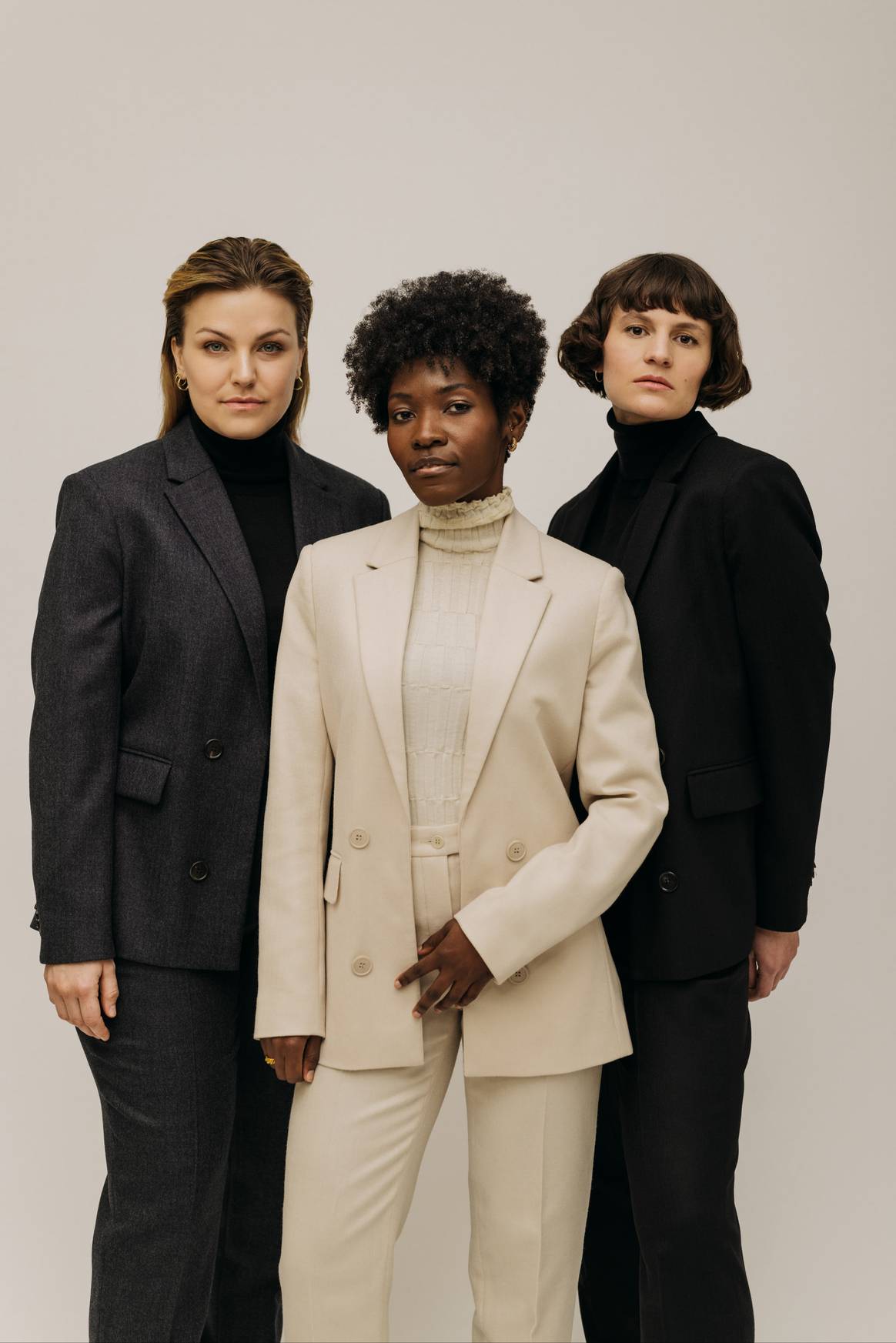
What happens to the pieces at the end of their life?
Customers can return the suit to us and we will then refurbish or repair it. From there, it then goes to our own second-hand shop, which doesn’t yet exist, but we’re working on it. We launched the online shop just over a year ago, on 7th May 2023, and the suits are worn for at least a year, so the issue wasn’t that urgent yet. And if a suit is too worn, we use the parts, the buttons, shoulder pads and the like. The rest could be put on the compost as it is.
How long does a whole suit take to biodegrade?
Probably between nine and twelve months, depending on the weather, the season and the nature of the compost. But it turns to soil and becomes nature again. We are also planning to start an experiment and show how the suit decomposes in a time-lapse process. That would be a campaign for the future.
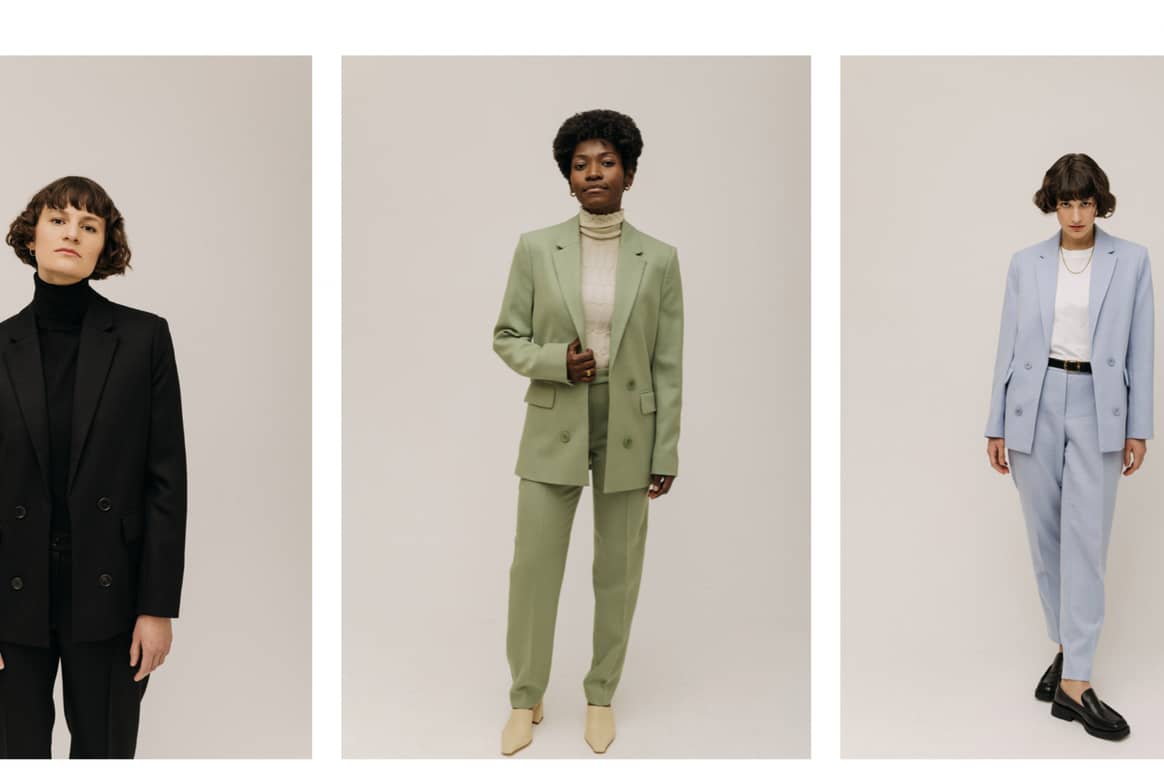
That is a great achievement, a completely biodegradable suit. But you are not advertising it at the moment?
It is the absolute USP of the suit, on the one hand, but we don’t emphasise this because it is a luxury product. For people in the industry it is a great achievement, but for everyone else it sometimes has a negative connotation. Even though it is a very positive thing, people don’t want to think about compost and biodegradables, so there is still much educational work to be done. For example, some people ask us whether the suit will disintegrate when it rains. However, people who are interested can go deeper and find the information on the website, and soon also podcasts on the subject.
In Scandinavia, people are much more aware when it comes to sustainability and the circular economy. Even children in kindergarten learn about the circular economy, circular design and the UN’s development goals.
Who is your target audience?
We get many enquiries from Germany, but also from other countries and cities, Brussels because of the European Commission, among others, a lot of interest from Munich, Frankfurt, Copenhagen, Zurich, these are the main cities.
In terms of professional groups, it is mainly women in management positions, but not only. Someone recently got married in our cream-coloured suit. Quite of few of the buyers of our organic silk scarves are men, by the way, and they are often given as gifts.
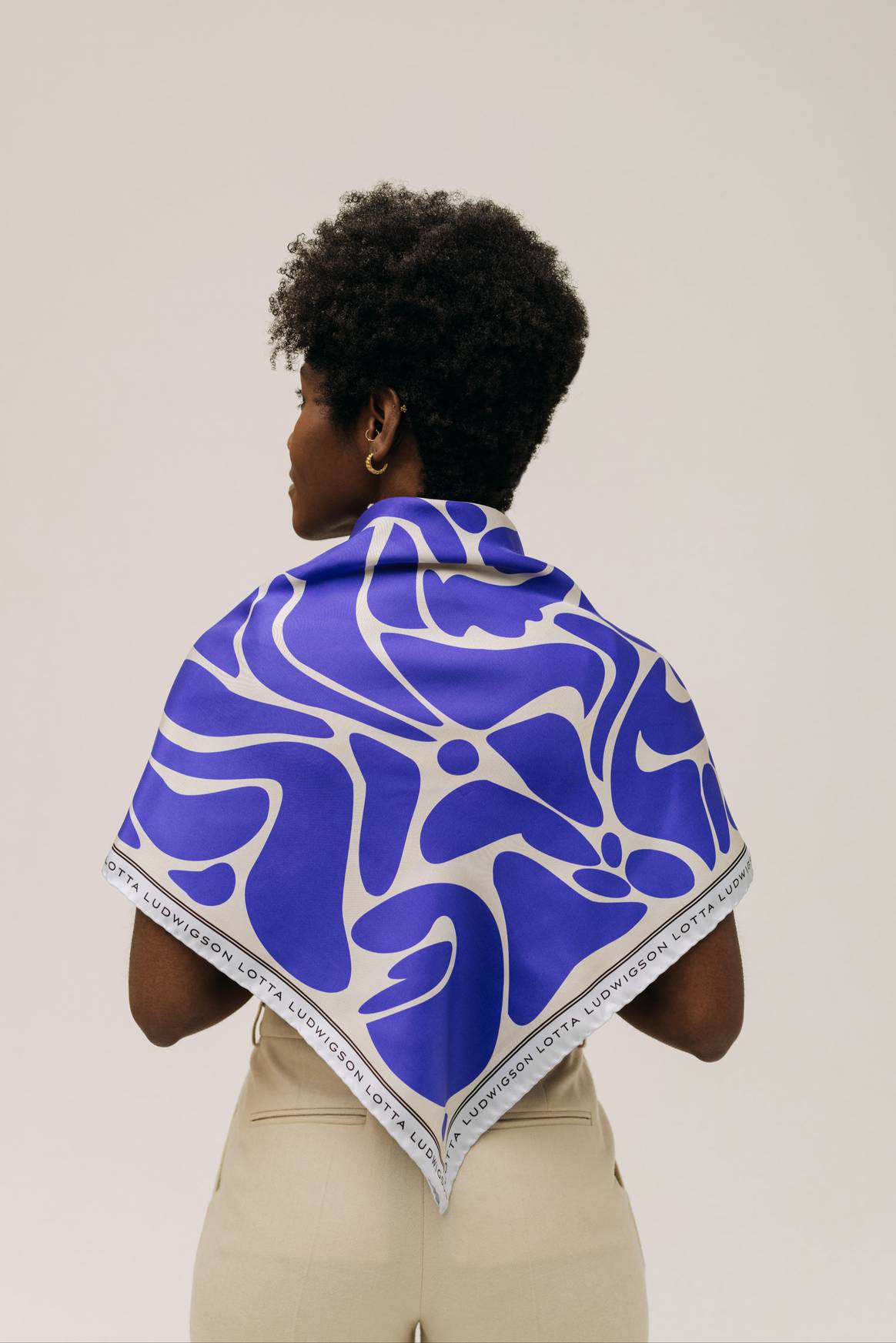
For our one-year online birthday, we developed new suits, keeping in mind that they might be more like occasion wear, something you can wear as a wedding guest or to a gala dinner. Of course, they can also be worn in the office, but they are a bit more colourful and extroverted. That was the feedback from some women, women who are on stage or presenters, for example, they often ask for something more colourful.
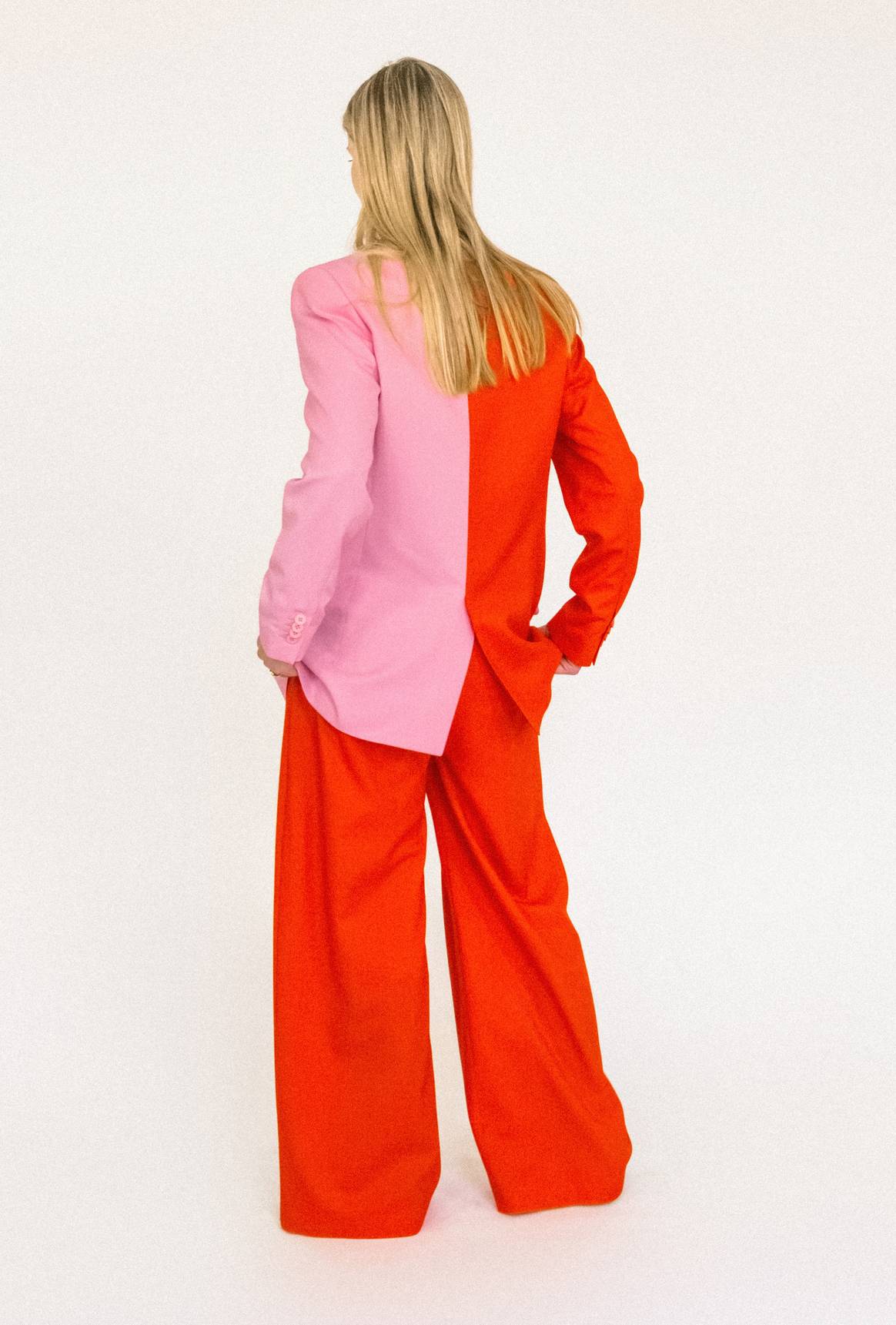
The sizes are currently available in XS to XL. Are you planning to expand this range?
Yes, this is definitely planned for the future, but for now we are sticking to standard sizes. In the future, however, we want to offer larger sizes as well as smaller sizes. We have realised that even XS is too big for some women – we need to become more inclusive in this direction too.
You mentioned four main manufacturers, could you tell us a bit more about them?
We found the Polish sewing atelier that makes our suits through our production agency. They have known the company for years and visit regularly. We have not yet been there ourselves but have been in contact via several communication channels.
The organic silk scarves are produced in a business at Lake Como in Italy. I was there myself just a few weeks ago and it was great to experience it all up close and get to know the people behind the sewing machines.
We found the knitwear factory in Sofia, Bulgaria, through an agency specialising in knitwear, which unfortunately no longer exists. The silk blouses are actually made in a small, women-run atelier in the heart of Berlin, which we visit regularly.
We also keep close contact with our button manufacturer in Germany, the upholstery manufacturer and the manufacturer of the outer fabric. We’ve been lucky because they only make the fabric for us. It is a really great company in Austria that wants to support companies like us, with small quantities. It is so nice to know that there are big manufacturers who believe in circularity and sustainability. The yarn manufacturers also come from Germany, wool dyeing is done in Austria.
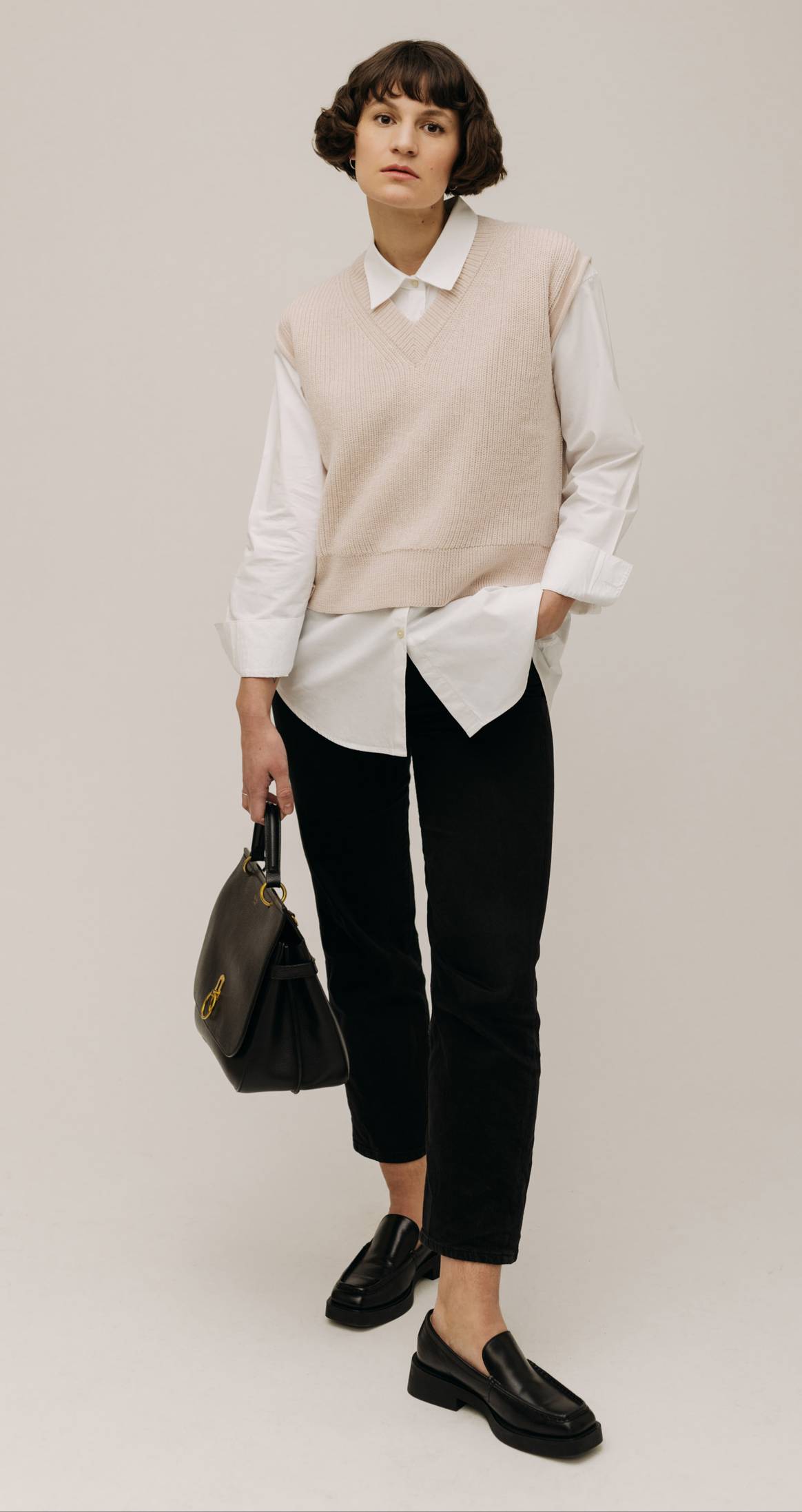
On the website, you break down exactly how the prices are calculated.
Yes, for each product we indicate exactly what proportion of the price is attributable to which area, for example materials, production, logistics, company costs, taxes and social responsibility. Many people have not yet realised that price transparency is important, which shows that they are not yet that interested. They tend to think ‘the suit looks nice, I’ll buy it’. Many lack a reference point because they don’t know what pricing looks like at other companies, especially not at fast fashion companies.
While we have lower logistics costs than other companies, company costs are currently still high, as they also include design and research and development costs.
The area of social responsibility means that for every product purchased, we donate money to various organisations that campaign for more equality, justice and opportunities for girls and women, currently to the Sparsa project in Nepal. This has been very well received.
What does the future hold for Lotta Ludwigson?
We are considering making the next suit style with Tencel, which would then be completely vegan. Otherwise, we will continue to develop products that are timeless, durable, recyclable and fair.


